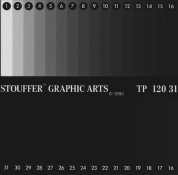dkonigs
Subscriber
Here's the inside of my X-Rite 396:
(I didn't disassemble it any further than removing the bottom so far, but the exterior looks similar to the 334. Except, you don't need to unscrew it to get to the battery compartment.)

From what I can tell, this thing was probably done entirely in discrete logic and analog components. No evidence yet of a microcontroller, but then again I haven't yet looked at the other side of the board. I suspect they used a more modern design to get the high voltage for the light panel, which is why this version doesn't have a big toroidal transformer like the older 334.
(I didn't disassemble it any further than removing the bottom so far, but the exterior looks similar to the 334. Except, you don't need to unscrew it to get to the battery compartment.)
From what I can tell, this thing was probably done entirely in discrete logic and analog components. No evidence yet of a microcontroller, but then again I haven't yet looked at the other side of the board. I suspect they used a more modern design to get the high voltage for the light panel, which is why this version doesn't have a big toroidal transformer like the older 334.







